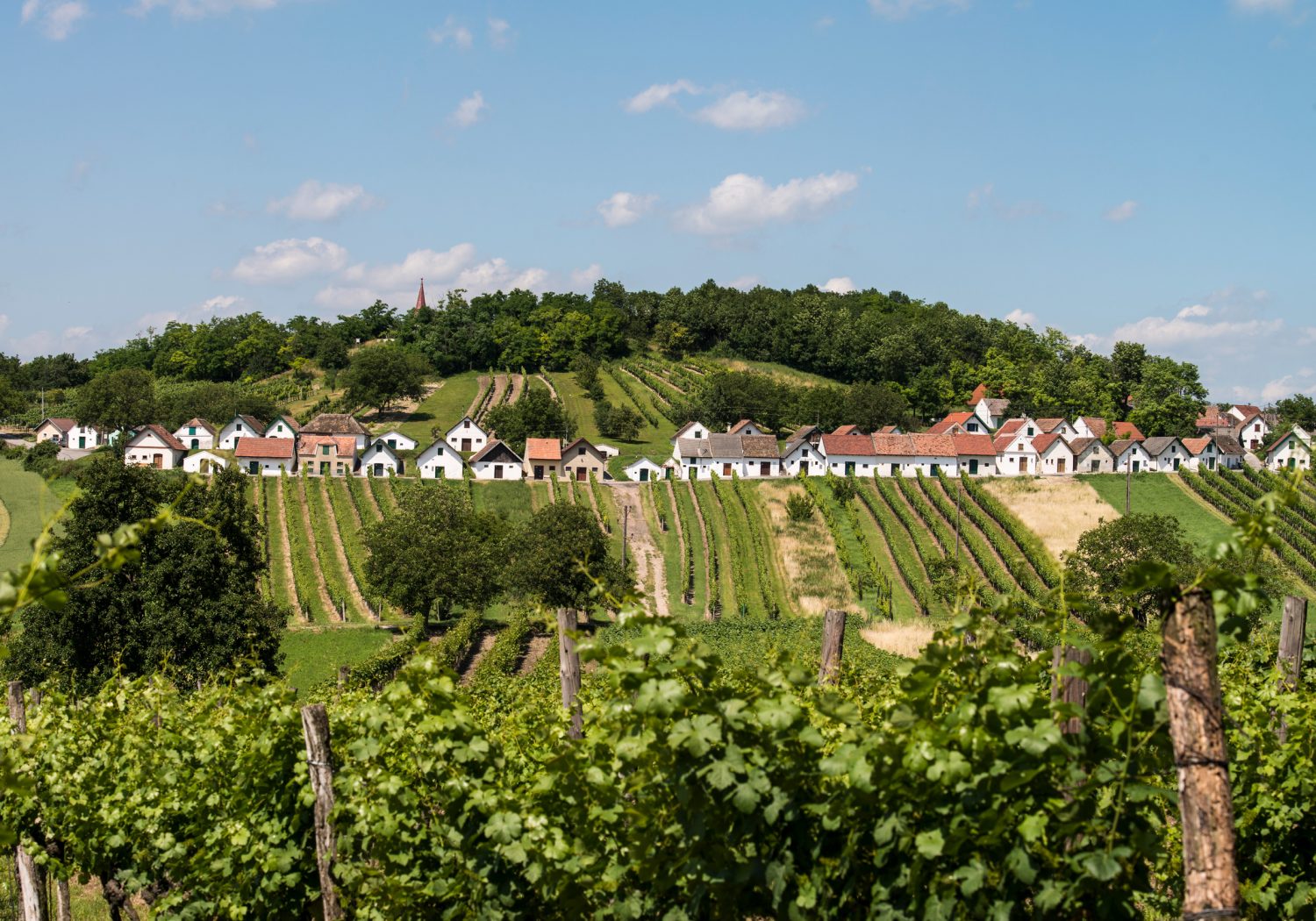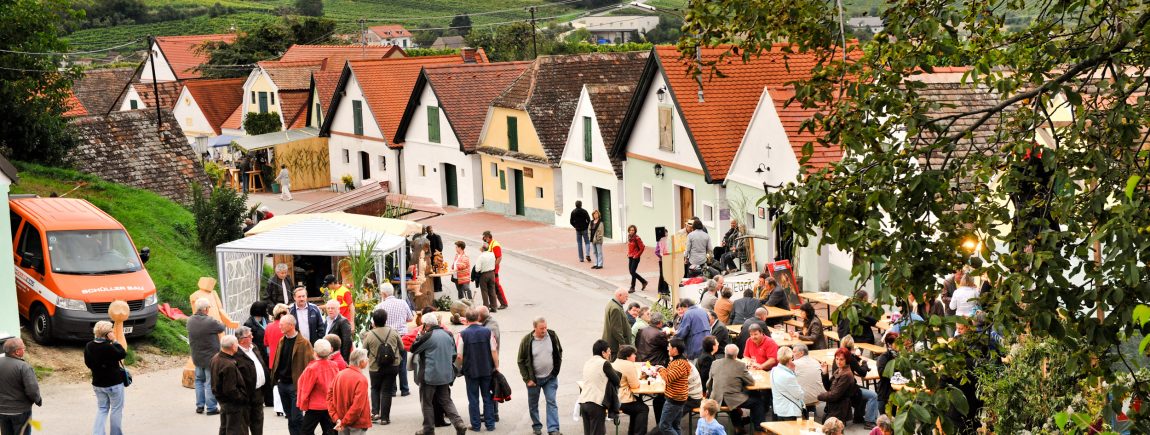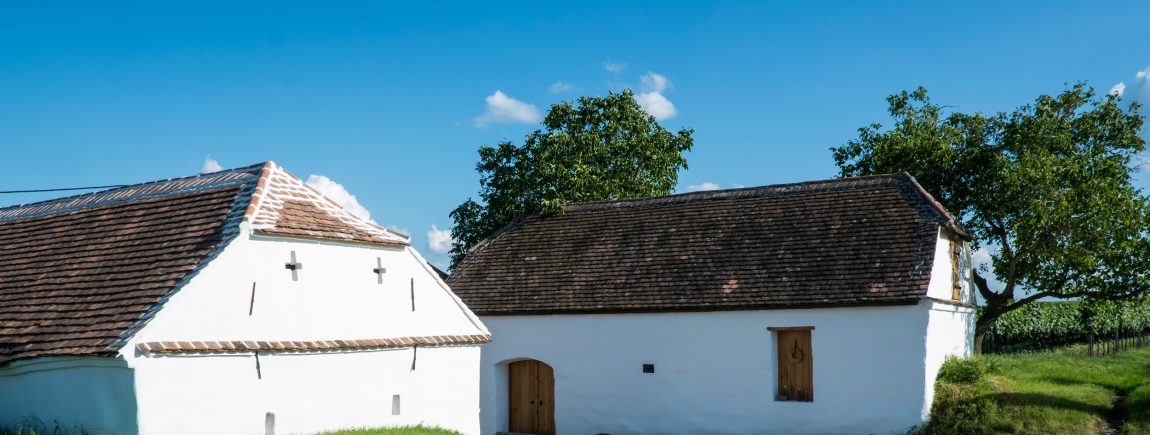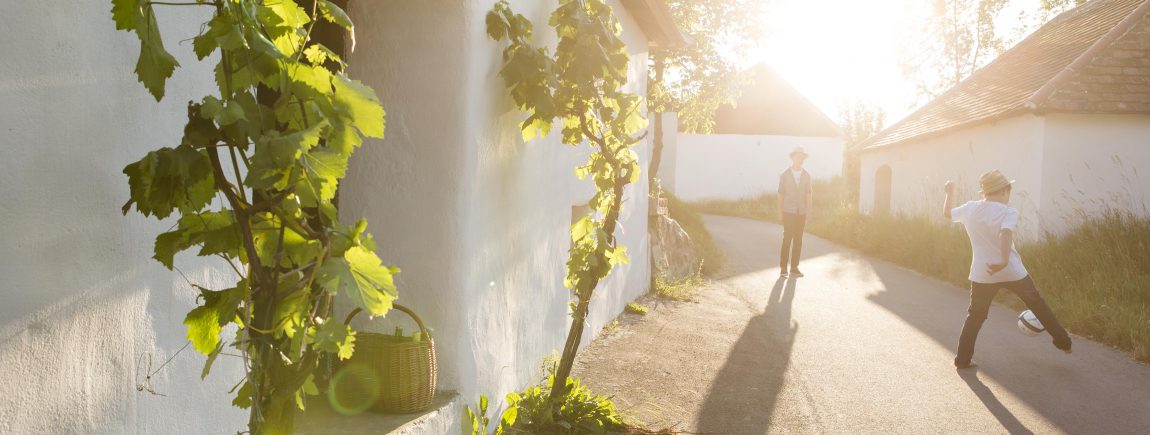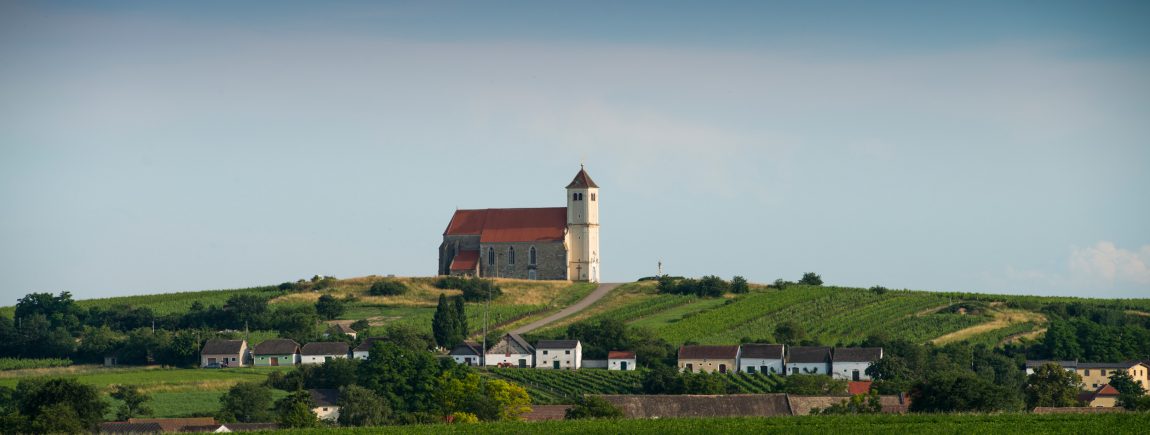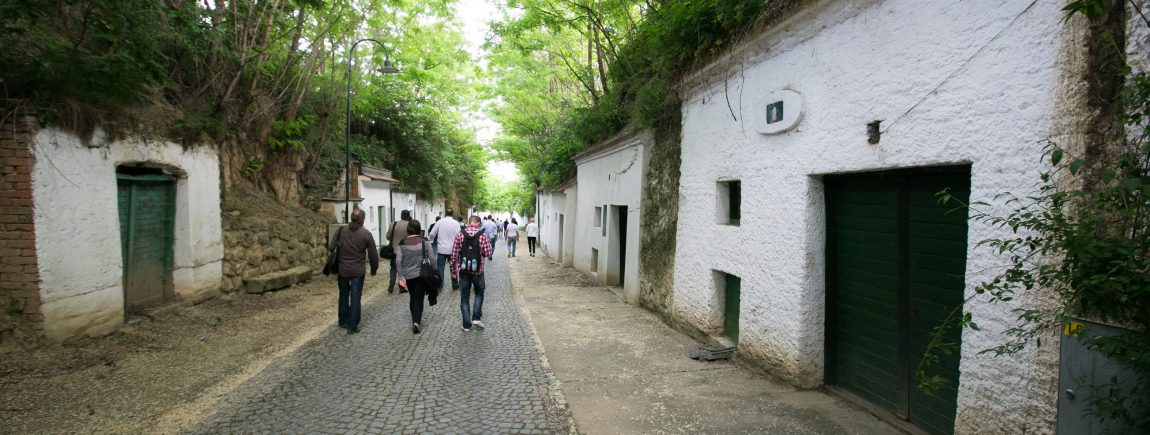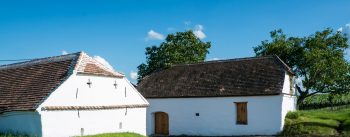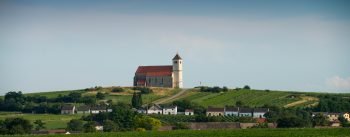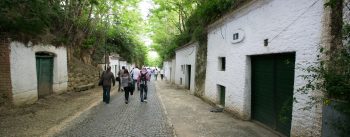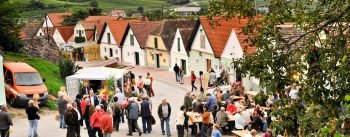Weinviertel Kellergassen - Villages without Chimneys
The Weinviertel is famed for its typical Kellergassen (wine cellar lanes) that mark the landscape of Lower Austria. They are a cultural fixture of Lower Austria. More than 1000 Kellergassen exist in Lower Austria, the great share of them in the Weinviertel. They are more than a place where wines are stored, but also where festivals are celebrated and special tours are offered.
Kellergassen are of historic cultural significance and have distinguished the Weinviertel and its landscape for many years. The wine cellar houses found in the Kellergassen were once used for wine production and storage. Today wines are usually produced at wineries, but the historic Kellergassen are often stirred from their slumber for special occasions in many villages.
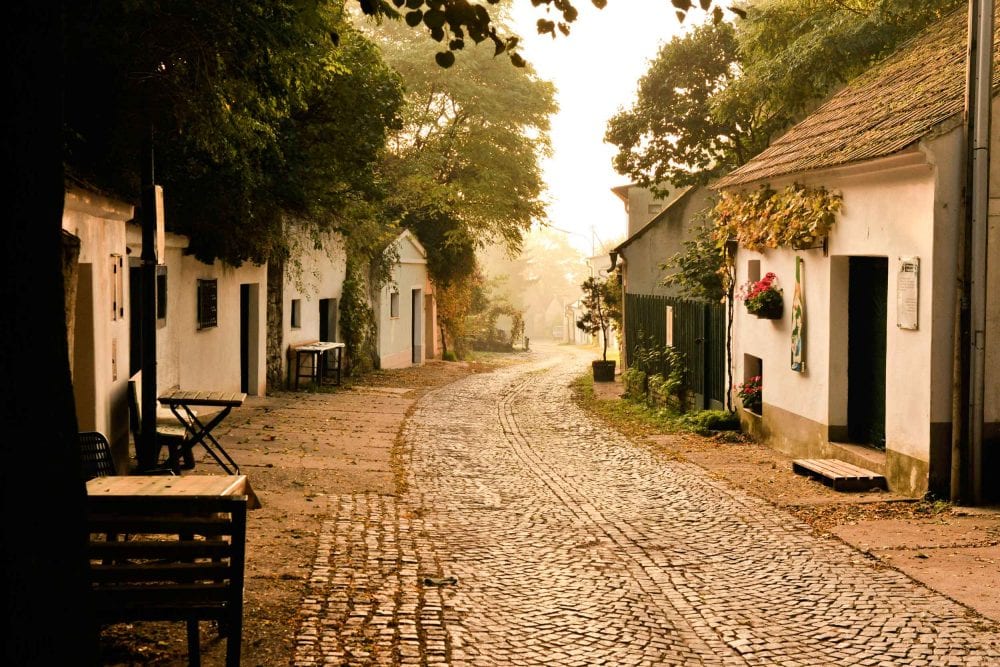

The cellar houses in Weinviertel often form little hamlets or are found on lanes in the Weinviertel. They have become a hallmark of Weinviertel wine culture and offer numerous enjoyable wine and food festivals called “Kellergassenfeste”. Highly recommendable for those interested in the Kellergassen that would like to see the dark cellar tunnels inside the cellar houses is a Kellergassen tour. Trained and certified guides show and explain all the fascinating features of the Weinviertel Kellergassen.
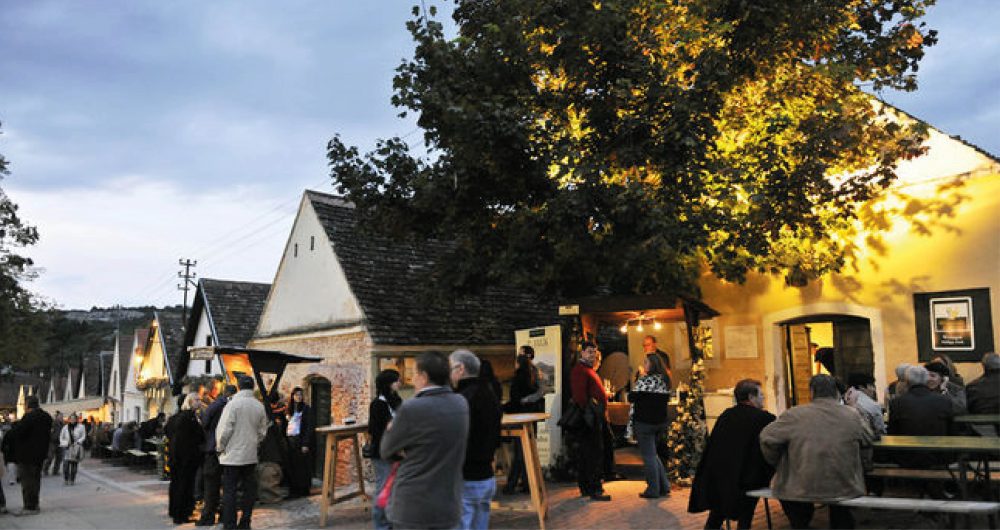


Kellergassen – Weinviertel's characteristic Architecture
The wine cellar houses that are so typical for the Weinviertel are comprised of three main sections: the press house or “Vorkappl”, the cellar “neck” (essentially the underground descent) and the cellar tunnel. The walls are usually made of unfired clay or bricks that have been whitewashed. The white walls and the blue green colour of the doors that have been painted with copper sulphate lend the Kellergassen (wine cellar lanes) their characteristic appearance.
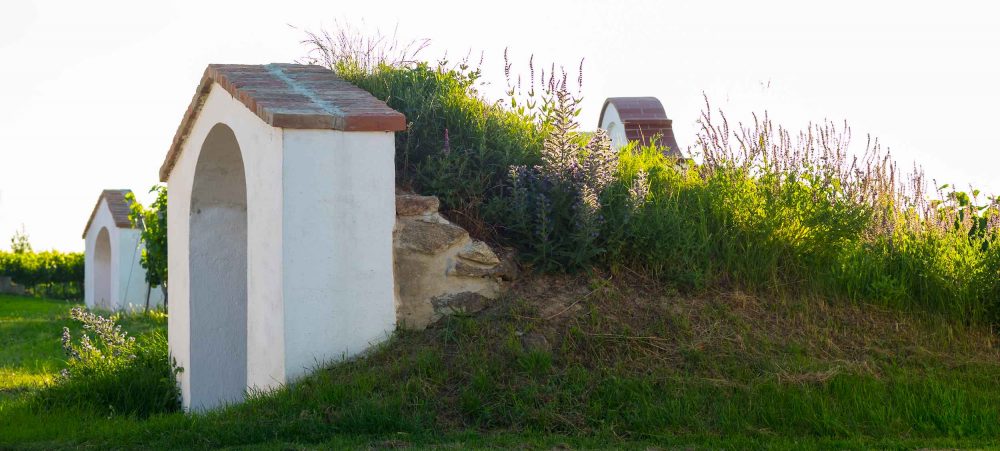

History of the Cellar Houses
The Romans stored their wines in so-called “celleae vinariae” in the classical era. The Roman historian Tacitus described Germanic storerooms for the storage of wine in one of his works. Up until the year 800, wines were stored in wooden structures that were first later replaced by those built with earth and rock.
Wine was produced and stored exclusively by monasteries until the modern era. After the Thirty Years’ War, farmers gained more vineyard area and needed more storage space. Increasingly more wine cellar houses were built that eventually formed Kellergassen (cellar lanes).
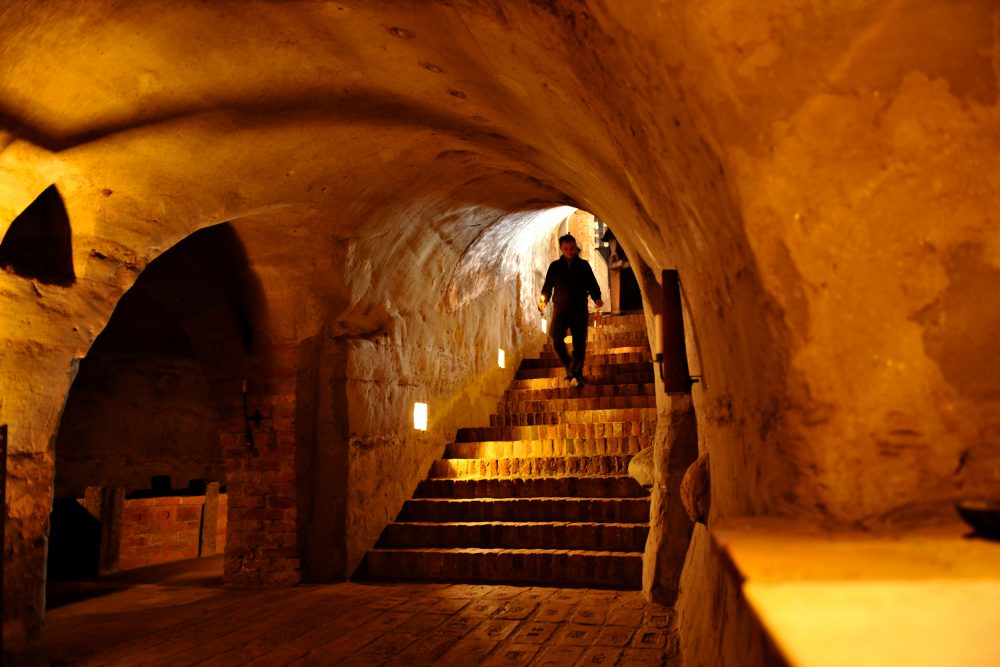


Famous Weinviertel Kellergassen
The Gstetten, or Kellergstetten, is among the most famous Kellergassen (cellar lanes) in the Weinviertel. It is a hamlet of Poysdorf where press houses and cellar houses have been built next to one another.
The longest Kellergasse in the world is found in Hadres, a small market village in Hollabrunn in Lower Austria. It is 1600 metres long and has around 400 cellar house and press houses.
The Öhlberg Kellergasse in Pillersdorf has largely preserved its original character. There are 21 press houses next to one another that are protected as a historic monument in the market village Zipf in Mailberg in Weinviertel.
The Wildendürnbach Kellergasse in Galgenerg is one of the largest Kellergassen in Austria with 184 press houses and cellar houses.
The Kellergasse in Zellerndorf carries the name “Maulavern” and includes nearly 90 cellar houses and at over 150 years old is one of the most beautiful and oldest in the Weinviertel.
The cellar village “Loamgrui” in Unterstinkenbrunn has a unique construction. Two narrow passes that are protected historical monuments connect the cellar village with the town.
Further information about the Weinviertel Kellergassen
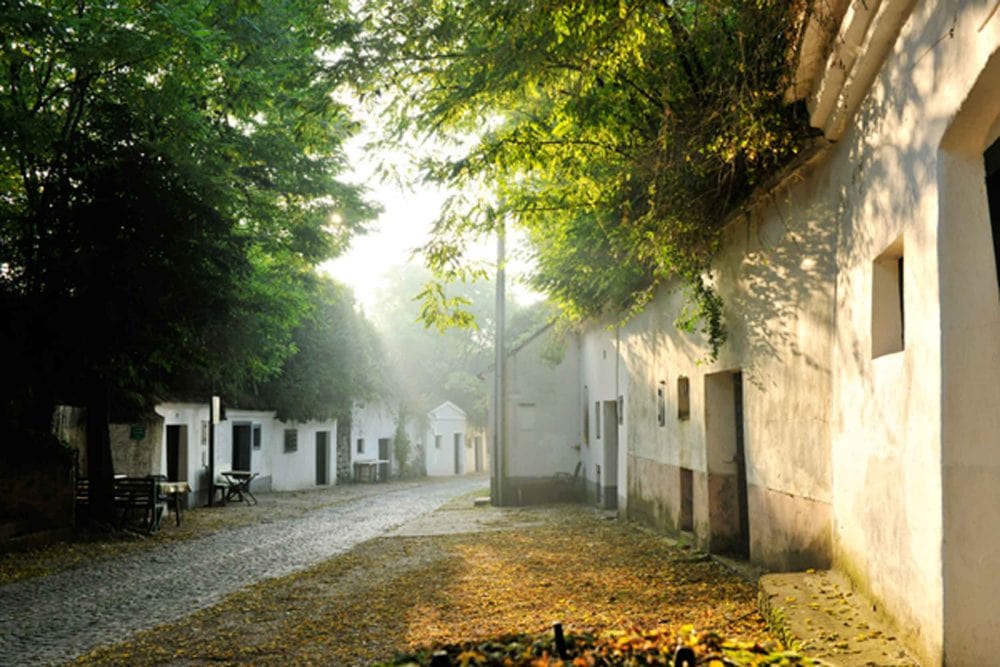
“The Weinviertel is like an ocean that has ceased to surge. It is therapeutic,” enthused the Austrian mystery author Alfred Komarek. The Kellergassen (cellar lanes) reveal another aspect of the wonderful soul of this landscape. Its simple architecture forms a unique setting for a new “old slowness” and aesthetic enjoyment.
